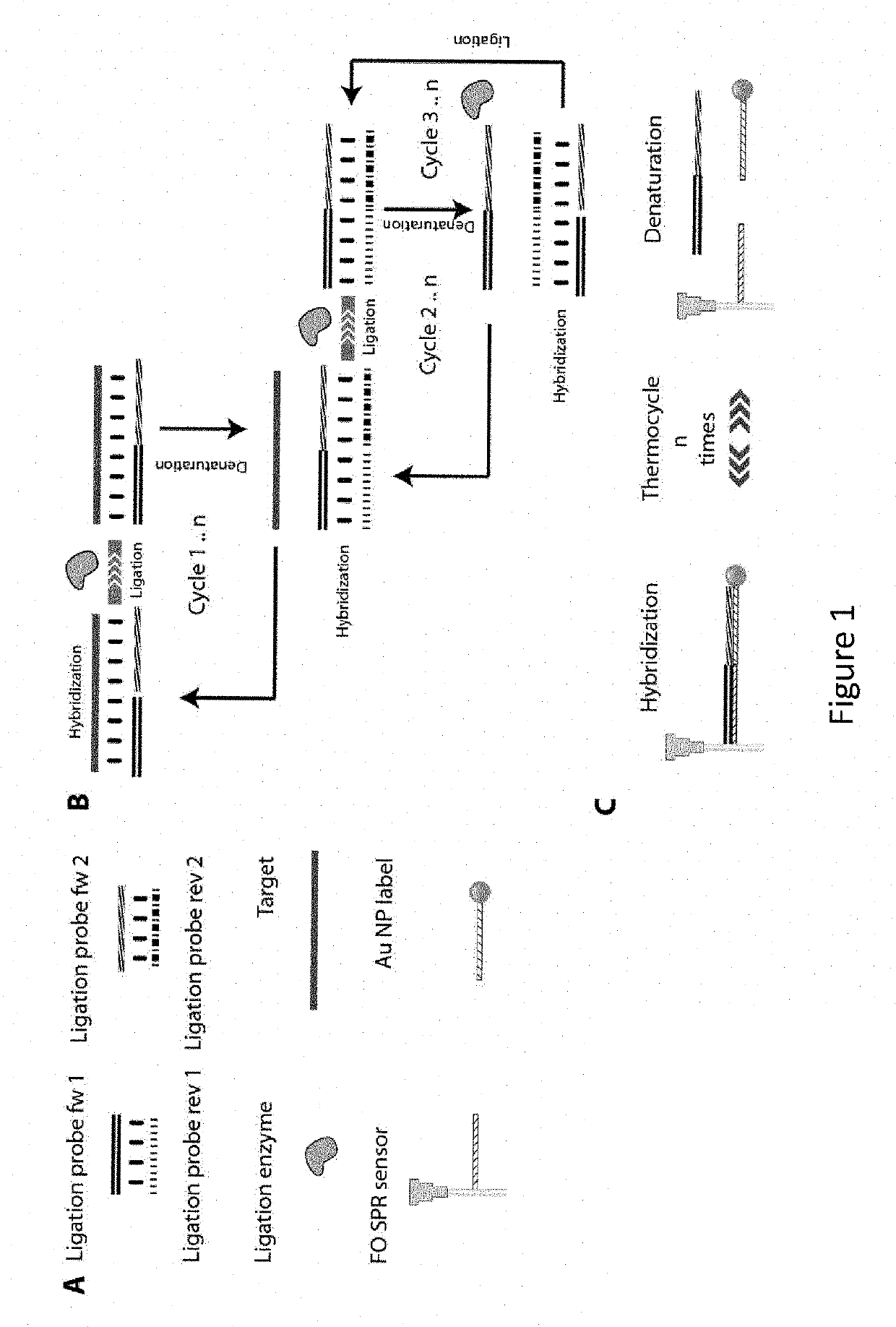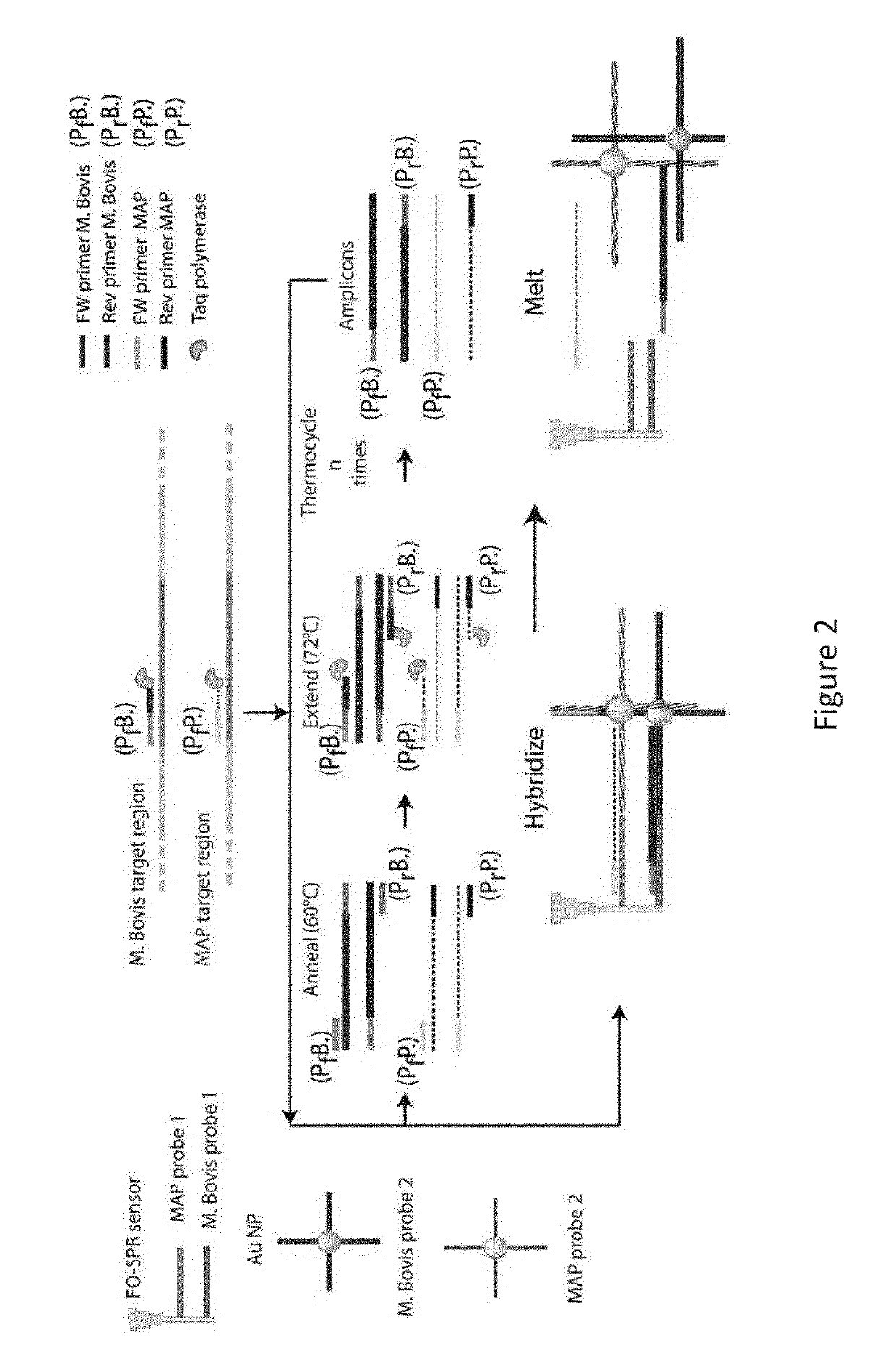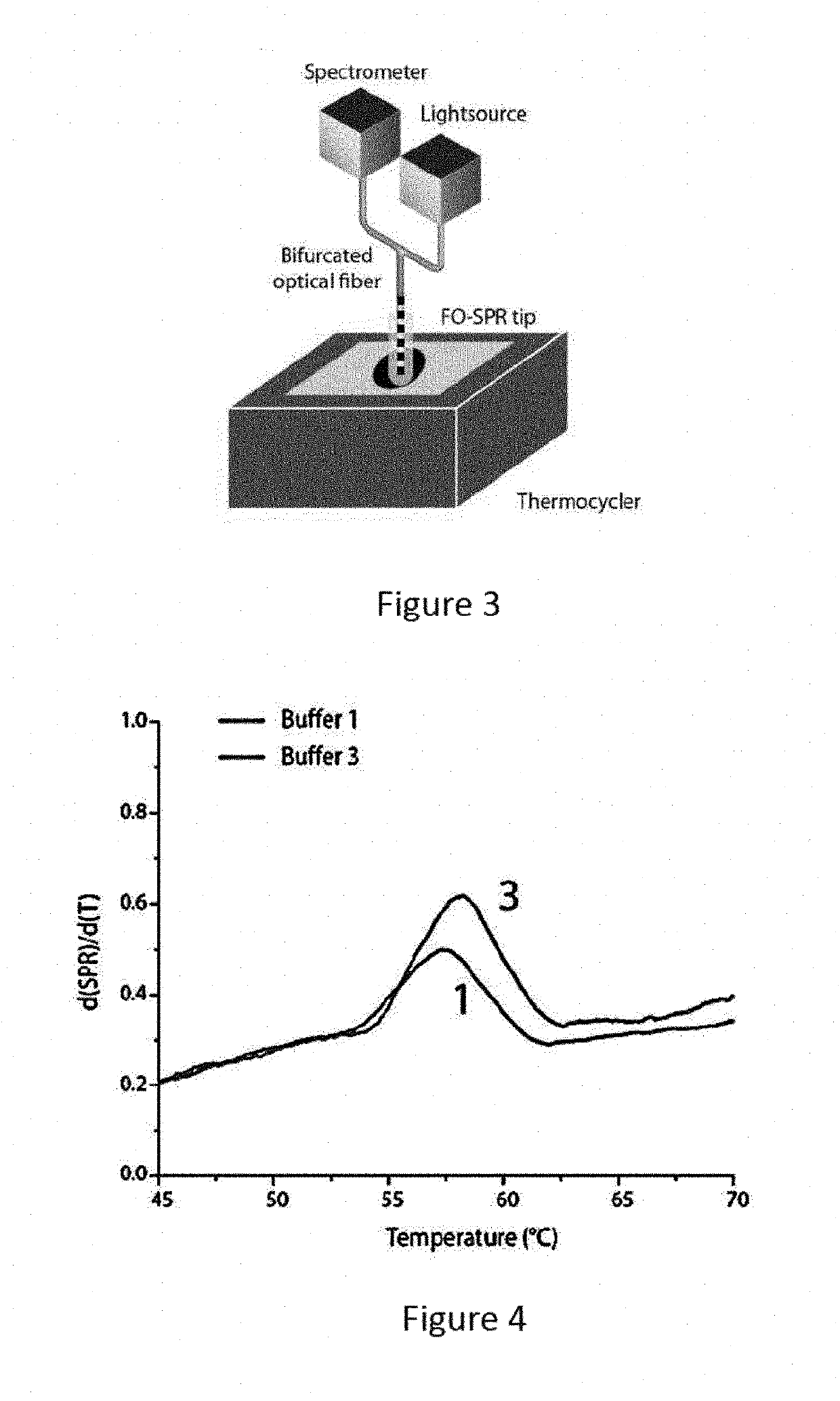Monitoring DNA amplification
a dna amplification and monitoring technology, applied in the field of real-time detection, identification and quantification of nucleic acids, can solve the problems of inability to monitor specific targets during the pcr reaction, unable to use dna quantification, and hampered the sensitivity of these reactions
- Summary
- Abstract
- Description
- Claims
- Application Information
AI Technical Summary
Benefits of technology
Problems solved by technology
Method used
Image
Examples
example 1
ation of Ligation Chain Reaction (LCR)
[0123]Buffer Optimization
[0124]The first step in the implementation of the LCR reaction on the FO-SPR platform was selection of the buffer compatible with both the FO-SPR melting assay and the LCR reaction. The standard ligation buffer supplied by the manufacturer of the ligation enzyme 9° N was not compatible with FO-SPR assay due to the presence of DTT, which reduces thiol bonds essential for immobilization of DNA molecules on gold surfaces. Furthermore, a buffer with certain ionic strength was needed to stabilize the Au NPs and to speed up their hybridization on the FO-SPR surface during the LCR reaction.
[0125]Next, the stability of Au NPs coated with DNA was tested. For this purpose, Au NPs, prepared both with and without backfilling, were compared in LCR, as it is known that backfilled Au NPs should have an increased stability and performance in hybridization assays [Stakenborg et al., Nanopart Res, 2008, 10, 143-152]. When unstable, Au NPs...
example 2
R Assay
[0128]As described in FIG. 1, the FO-SPR LCR reaction consists of multiple ligation cycles, which are enabled by heating up and cooling down the reaction mixture. Because the heating of a fluid expands its volume, it also decreases the refractive index of the LCR reaction mixture, resulting in the SPR signal that is the exact inverse of the temperature signal (FIG. 6). This temperature effect is clearly visible in the FO-SPR signals on both measurement channels and allows easy processing of the data, as the refractive index changes can be used to determine the reaction cycle boundaries. Each reaction cycle is split in 3 phases, namely the hybridization phase where the DNA target strands can hybridize with the ligation probes, the ligation phase where the ligation enzyme covalently links perfectly hybridized probes and finally the melting phase where ligated products are melted from the target liberating it for the next round of ligation. The essential part of the LCR DNA ampl...
example 3
ation of DNA Targets Using the FO-SPR LCR Assay
[0130]Next, the FO-SPR LCR assay was used to determine the target concentration by examining the number of LCR cycles necessary to obtain a FO-SPR melting point of the corresponding DNA target. In FIG. 8 part A, the concept is shown for a WT DNA target concentration of 100 fM. Out of 40 LCR cycles performed, no clear melting point was observed for this target in the first 27 cycles. In the subsequent cycles, a melting point appeared first at 51° C. followed by gradual increase towards 52.3° C. This shift in Tm is expected and can be attributed to the dependence of Tm on the increasing target concentration through LCR cycles [Gudnason et al. Nucl. acids res., 2007, 35, e127]. In comparison with the Tm obtained during the DNA melting optimization experiments described in paragraph 4.2, the Tm has shifted almost 7° C., this is both a result from shorter hybridization times in the actual LCR assay and slight differences in ionic makeup of t...
PUM
| Property | Measurement | Unit |
|---|---|---|
| melting temperature | aaaaa | aaaaa |
| melting temperature | aaaaa | aaaaa |
| diameter | aaaaa | aaaaa |
Abstract
Description
Claims
Application Information
 Login to View More
Login to View More - R&D
- Intellectual Property
- Life Sciences
- Materials
- Tech Scout
- Unparalleled Data Quality
- Higher Quality Content
- 60% Fewer Hallucinations
Browse by: Latest US Patents, China's latest patents, Technical Efficacy Thesaurus, Application Domain, Technology Topic, Popular Technical Reports.
© 2025 PatSnap. All rights reserved.Legal|Privacy policy|Modern Slavery Act Transparency Statement|Sitemap|About US| Contact US: help@patsnap.com



